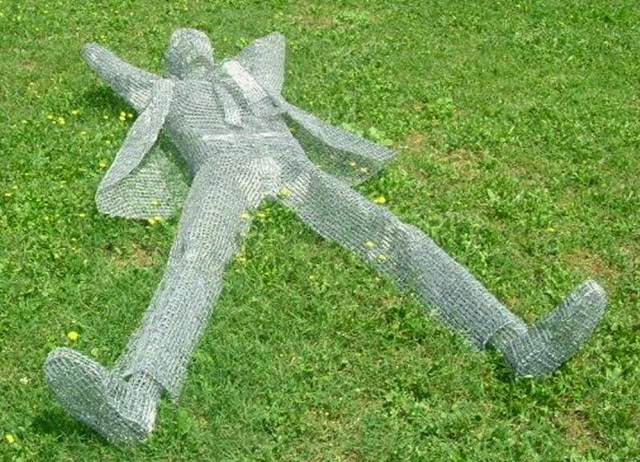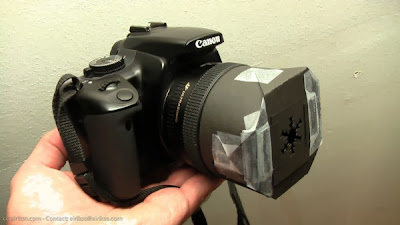In production, there are ethical and legal constraints that you must abide by and during filming. The main ethical issue is representation. You must not misrepresent the actors and actresses based on the colour of their skin, their sexual orientation or religion. Most organisations, such as the BBC, have a series of guidelines for producers to follow when making a programme. The guidelines are not law and therefore don’t prevent an organisation from making programmes that deal with difficult issues and as a result it allows producers to tackle issues in a sensitive, ethical and effective way.
The BBC editorial guidelines say that, ‘A “controversial subject” may be a matter of public policy or political or industrial controversy. It may also be a controversy within religion, science, finance, culture, ethics and other matters entirely. In determining whether subjects are controversial, we should take account of: the level of public and political contention and debate, how topical the subjects are, sensitivity in terms of relevant audiences' beliefs and culture, whether the subjects are matters of intense debate or importance in a particular nation, region or discrete area likely to comprise at least a significant part of the audience, a reasonable view on whether the subjects are serious and the distinction between matters grounded in fact and those which are a matter of opinion. When dealing with 'controversial subjects', we must ensure a wide range of significant views and perspectives are given due weight and prominence, particularly when the controversy is active. Opinion should be clearly distinguished from fact.’
The legal constraints are laws that affect the industry if broken. These include: Race Relations Act (1976), Human Rights Act (1998), Privacy Law, Copyright Law, Libel, Obscene Publications Act (1959 and 1964), Equality Act (2010), Protection of Children Act (1978) and Health and Safety at Work Act (1974).
The Race Relations Act (1976) makes it unlawful to discriminate against anybody directly or indirectly on racial grounds. The Commission for Equality and Human Rights is a body that was formed in 2007 that identifies equality as a concern for all of us and identifies equality, diversity and respect for the human rights and dignity of all citizens as core British values.
The BBC aims ‘to reflect fully and fairly all of the United Kingdom's people and cultures in our services. Content may reflect the prejudice and disadvantage which exist in societies worldwide but we should not perpetuate it. In some instances, references to disability, age, sexual orientation, faith, race, etc. may be relevant to portrayal. However, we should avoid careless or offensive stereotypical assumptions and people should only be described in such terms when editorially justified.’
The Human Rights Act (1998) states that “No one shall be forced to perform or forced into compulsory labour…”. This therefore means that if someone doesn’t want to participate, they shouldn’t be forced to.
The Privacy Law protects an preserved the privacy of individuals. Everyone has a right to privacy. The Information Commissioners Office (ICO) is an independent UK body that protects personal information by making rulings on cases where people believe their privacy has been invaded. It also promotes access to official data and information for both individuals and companies.
The BBC editorial guidelines say that ‘When contributors give informed consent to take part in our output, they can be assumed to have waived their expectations of privacy in relation to their contribution, subject to any agreed conditions placed on their participation.’
‘We should operate openly wherever we are unless we have approval for secret recording. This is particularly important when our audio-visual equipment is not very obvious as in the case of small video cameras, mobile phone cameras or fixed webcams. We may need to use notices to make people aware that we are recording and to allow them to avoid us. When filming openly in public and semi-public places, we do not normally obtain express consent from individuals who are incidentally caught on camera as part of the general scene, unless they are engaged in an activity where they have a legitimate expectation of privacy that is not outweighed by a public interest in showing them. However, if an individual or organisation asks us to stop filming or recording (whether live or recorded) because of a concern about privacy, we should normally do so, unless it is editorially justified to continue.’
‘We should pay particular attention to the expectations of privacy of people under 16 and those who are vulnerable. When children are to be featured in our output in a way that would infringe a legitimate expectation of privacy, we should normally gain their informed consent (wherever possible) and the informed consent of a parent, legal guardian or other person of 18 or over acting in loco parentis. Featuring vulnerable people may also require the informed consent of a responsible person of 18 or over.’
‘Although material, especially pictures and videos, on third party social media and other websites where the public have ready access may be considered to have been placed in the public domain, re-use by the BBC will usually bring it to a much wider audience. We should consider the impact of our re-use, particularly when in connection with tragic or distressing events. There are also copyright considerations.’
The Copyright Law protects the rights of people who have produced something, such as a book or piece of music. Breaching copyright can have serious consequences for a media producer, as it can result in prosecution.
Libel is damaging someone’s reputation by something that is said in a fixed medium and on a large scale e.g. in a newspaper or TV programme. This damage to reputation is known as defamation.
In the BBC editorial guidelines they state that, ‘An individual can sue for damage to their reputation caused by material broadcast to a third party, including material published online. This area of the law is called defamation or libel. It is the biggest legal pitfall relating to the BBC's output, with serious financial consequences if we get it wrong.’
The Obscene Publications Act (1959 and 1964) set out what is regarded as obscene and unfit for publication in England and Wales. It enforces censorship of obscene materials. The BBC believe, ‘Television scheduling decisions need to balance the protection of young people and particularly children with the rights of all viewers, including those without children, to receive a full range of subject matter throughout the day. They must also be judged against the requirements of the watershed. The 9pm television watershed is used by broadcasters to distinguish between programmes intended mainly for a general audience and those programmes intended for an adult audience. However, parents and carers share in the responsibility for assessing whether programme content is suitable for their children, based on their expectations of that content. The 9pm watershed signals the beginning of the transition to more adult material, but the change should not be abrupt. Programme makers and schedulers should also take into account the nature of the channel and viewer expectations. The strongest material should appear later in the schedule. If sudden changes of tone are unavoidable they should be clearly signposted, for example by giving clear information about scenes of a sexual nature, violence or the use of strong language.’
The BBC also say, ‘Only in exceptional circumstances can there be any departure from this practice, and then clear content information should be given. Exceptions may include, but are not limited to, images that some children might find distressing in natural history programmes or items in pre-watershed news bulletins. Any proposed exceptions must be referred to a senior editorial figure or, for independents, to the commissioning editor.’
Specifically at trailers, the BBC state that ‘Trails scheduled next to programmes targeted at children or when children are particularly likely to be watching, or in online content likely to appeal to a significant proportion of children, should be suitable for that audience.
Trails for post-watershed programmes must be appropriate for a general audience including children if shown before the watershed.’
The Equality Act (2010) is to represent a numerous number of previous acts and legislations to form the basis of the anti-discrimination law in Great Britain. This was the Equal Pay Act (1970), the Sex Discrimination Act (1975), the Race Relations Act (1976) the Disability Discrimination Act (1995) and three major statutory instruments protecting discrimination in employment on the grounds of religion or belief, sexual orientation and age. The Equality Act (2010) requires equal treatment in access to employment as well as private and public services, regardless of the protected characteristics of age, disability, gender reassignment, marriage and civil partnership, race, religion or belief, sex, and sexual orientation. In the case of gender, there are special protections for pregnant women. However, the Act allows transsexual people to be barred from gender-specific services if that is "a proportionate means of achieving a legitimate aim". In the case of disability, employers and service providers are under a duty to make reasonable adjustments to their workplaces to overcome barriers experienced by disabled people. (
http://en.wikipedia.org/wiki/Equality_Act_2010)
The Protection of Children Act (1978) is legislation that provides protection for children from abuse. For example, it is an offence to possess or take, show or distribute indecent images of children.
The BBC follow the rule that, ‘We should apply the principles of the
BBC Child Protection Policy in our dealings with children and young people under 18. Their welfare is our paramount consideration. This means their interests and safety must take priority over any editorial requirement.’
The Health and Safety at Work Act (1974) makes it a criminal offence for manages to fail to ensure a safe working environment. If someone has an accident, then it is possible to be held responsible by a court.
The BBC believe, ‘We should not ask contributors to expose themselves to significant health and safety risks while taking part in our output unless we have completed a BBC risk assessment form and conducted rigorous fitness and psychological checks as appropriate. We must ensure that our contributors recognise and accept all the identified risks in writing. We must ensure we do not encourage contributors to put themselves at risk when using recording equipment, including small cameras and mobile phones, to gather material.’
CATEGORY: ETHICS and MEDIA and SOCIETY






.jpg)
.jpg)
.jpg)
.jpg)



